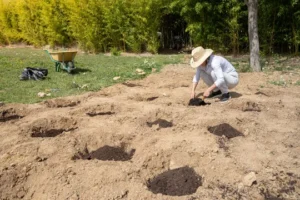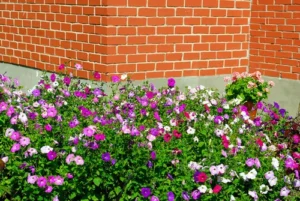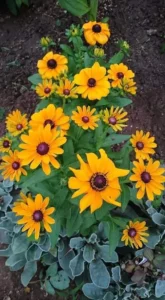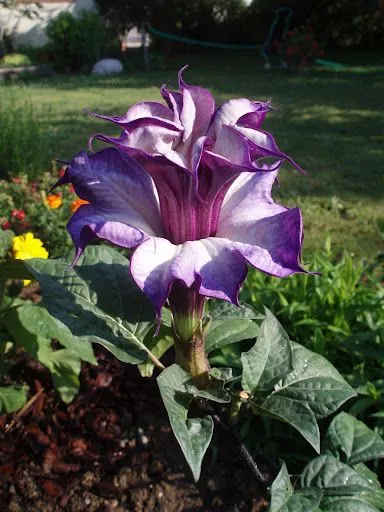The Benefits of Native Plants in Your Garden
Introduction
Gardening is an enriching hobby that beautifies our surroundings and contributes to environmental sustainability. Among the various types of plants that can be cultivated, native plants hold a special place due to their numerous ecological, aesthetic, and practical benefits. Native plants, also known as indigenous plants, have evolved naturally in a particular region, adapting to its climate, soil, and other environmental conditions over thousands of years. This article delves into the many advantages of incorporating native plants into your garden, providing insights into how they can transform your gardening experience while supporting the local ecosystem.
Ecological Benefits of Native Plants
1. Supporting Local Wildlife

One of the most significant benefits of native plants is their ability to support local wildlife. Native plants have co-evolved with local fauna, forming intricate and interdependent relationships. These plants provide essential resources such as food, shelter, and breeding grounds for a variety of wildlife, including birds, insects, mammals, and amphibians.
**Food Sources:**
Native plants produce fruits, seeds, nectar, and foliage that serve as food for local wildlife. For instance, native flowering plants like milkweed (Asclepias spp.) are crucial for the survival of monarch butterflies, whose caterpillars feed exclusively on milkweed leaves. Similarly, native berry-producing shrubs such as elderberry (Sambucus canadensis) and serviceberry (Amelanchier spp.) offer nutritious food for birds and small mammals.
**Shelter and Habitat :**Native plants provide vital shelter and nesting sites for wildlife. Dense shrubs, grasses, and trees offer protection from predators and harsh weather conditions. For example, the dense foliage of native oak trees (Quercus spp.) provides nesting sites for various bird species, while native grasses like switchgrass (Panicum virgatum) offer cover for ground-nesting birds and small mammals.
**Pollinators and Beneficial Insects:**
Native plants are indispensable for pollinators such as bees, butterflies, and hummingbirds. These plants have evolved alongside local pollinators, resulting in synchronized blooming periods that ensure a steady supply of nectar and pollen. By planting native species like purple coneflower (Echinacea purpurea) and bee balm (Monarda spp.), gardeners can attract and support a diverse array of pollinators, which are essential for the pollination of both wild and cultivated plants.
2. Enhancing Biodiversity
Biodiversity refers to the variety of life forms within a particular ecosystem. Gardens that incorporate native plants contribute significantly to local biodiversity by creating habitats that support a wide range of species. Increased biodiversity has several benefits, including ecosystem resilience, improved soil health, and enhanced pest control.
**Ecosystem Resilience:**
Diverse ecosystems are more resilient to disturbances such as climate change, disease outbreaks, and invasive species. By planting a variety of native species, gardeners can create a more stable and resilient garden ecosystem that can better withstand environmental stressors.
**Soil Health:**
Native plants promote healthy soil ecosystems by fostering beneficial soil microorganisms and enhancing soil structure. Their deep root systems help prevent soil erosion, improve water infiltration, and increase organic matter content. Native legumes, such as wild indigo (Baptisia spp.), have nitrogen-fixing capabilities, enriching the soil with essential nutrients.
**Pest Control:**
Increased biodiversity in a garden can help manage pest populations naturally. Native plants attract beneficial insects, such as ladybugs and predatory beetles, which prey on common garden pests. Additionally, diverse plantings can disrupt the life cycles of pests, reducing their impact on crops and ornamental plants.
Environmental Benefits of Native Plants
1. Water Conservation
Water is a precious resource, and gardening practices that conserve water are becoming increasingly important. Native plants are well-adapted to local rainfall patterns and soil conditions, making them more efficient users of water compared to non-native species.
**Drought Tolerance:**
Many native plants have evolved mechanisms to survive periods of drought. For example, the roots of native prairie grasses, such as little bluestem (Schizachyrium scoparium), can penetrate deep into the soil to access moisture during dry spells. By incorporating drought-tolerant native plants into your garden, you can reduce the need for supplemental watering, conserving water and lowering your utility bills.
**Efficient Water Use:**
Native plants are naturally adapted to the local climate and typically require less water once established. This contrasts with many exotic plants that may need frequent watering to thrive. By choosing native species, gardeners can create landscapes that are more sustainable and water-efficient.
**Rain Gardens:**
Rain gardens, which are designed to capture and filter stormwater runoff, often feature native plants. These gardens help reduce the volume of runoff, preventing soil erosion and improving water quality by filtering pollutants. Native plants, with their extensive root systems, are particularly effective at absorbing and filtering stormwater.

2. Reducing Chemical Use
Another significant environmental benefit of native plants is their ability to thrive without the need for chemical fertilizers, pesticides, and herbicides. This reduction in chemical use has numerous positive impacts on the environment.
**Natural Pest Resistance:**
Native plants have evolved defenses against local pests and diseases. This natural resistance reduces the need for chemical pesticides, which can harm beneficial insects, pollinators, and other wildlife. By choosing native species, gardeners can maintain healthy plants with fewer chemical interventions.
**Soil Health and Fertility:**
Native plants contribute to soil health by promoting beneficial soil organisms and improving soil structure. Their deep roots help aerate the soil and increase organic matter content, reducing the need for chemical fertilizers. In turn, healthier soils support robust plant growth, further reducing the reliance on synthetic inputs.
**Minimizing Herbicide Use:**
Native plants are well-adapted to local conditions and are less likely to become invasive compared to some non-native species. This means gardeners can spend less time and effort managing invasive plants and applying herbicides. Additionally, native groundcovers and grasses can outcompete weeds, providing natural weed control.
Aesthetic and Practical Benefits of Native Plants
1. Low Maintenance Gardening
One of the most appealing aspects of native plants is their low maintenance requirements. Once established, native plants are typically hardier and more self-sufficient than non-native species.
**Adaptation to Local Conditions:**
Native plants are naturally adapted to the local climate, soil, and weather patterns. This adaptation means they require less intervention in terms of watering, fertilizing, and pest control. Gardeners can enjoy beautiful landscapes with minimal effort, freeing up time for other activities.
**Seasonal Interest:**
Many native plants offer year-round interest with their diverse forms, colors, and textures. For example, native trees like the red maple (Acer rubrum) provide stunning fall foliage, while spring-blooming wildflowers like trilliums (Trillium spp.) add vibrant colors to the garden. By selecting a variety of native species, gardeners can create visually appealing landscapes that change with the seasons.
2. Cost-Effectiveness
Gardening with native plants can also be cost-effective in the long run. While the initial investment in plants may be comparable to or slightly higher than non-native species, the reduced need for water, fertilizers, and pesticides can lead to significant savings over time.
**Lower Water Bills:**
As mentioned earlier, native plants typically require less water once established. This reduced need for irrigation can result in lower water bills, particularly in regions with high water costs or water restrictions.
**Reduced Chemical Purchases:**
By minimizing the use of chemical fertilizers, pesticides, and herbicides, gardeners can save money on these products. Additionally, reducing chemical use can extend the lifespan of garden tools and equipment by preventing corrosion and damage caused by harsh chemicals.
**Less Maintenance:**
The low maintenance nature of native plants means less time and money spent on garden upkeep. Fewer hours spent watering, weeding, and treating for pests translates to cost savings and more free time for gardeners.
Cultural and Educational Benefits of Native Plants
1. Connecting with Local Heritage
Gardening with native plants can foster a deeper connection to the local environment and cultural heritage. Native plants are an integral part of the natural history of a region, and their presence in gardens can serve as a living reminder of the area’s ecological and cultural legacy.
**Historical Significance:**
Many native plants have historical significance and have been used by indigenous peoples for food, medicine, and other purposes for centuries. By planting native species, gardeners can honor and preserve this traditional knowledge and cultural heritage.
**Educational Opportunities:**
Native plant gardens provide valuable educational opportunities for children and adults alike. Schools, community centers, and public gardens can use native plantings to teach about local ecosystems, plant biology, and environmental stewardship. These educational experiences can inspire a greater appreciation for the natural world and encourage sustainable gardening practices.
2. Fostering Community and Social Connections
Gardening with native plants can also help build community and foster social connections. Community gardens, public parks, and neighborhood landscapes that feature native plants can serve as gathering spaces for residents to connect, share knowledge, and collaborate on gardening projects.
**Community Engagement:**
Community gardens that focus on native plants can engage residents in hands-on gardening activities, workshops, and events. These spaces can become hubs of social interaction, fostering a sense of community and shared purpose.
**Collaborative Projects:**
Neighborhood associations and local gardening clubs can work together on projects to restore native plant habitats in public spaces, parks, and along roadsides. These collaborative efforts can strengthen community bonds and promote environmental stewardship.
Challenges and Considerations
While the benefits of native plants are numerous, there are some challenges and considerations to keep in mind when incorporating them into your garden.



